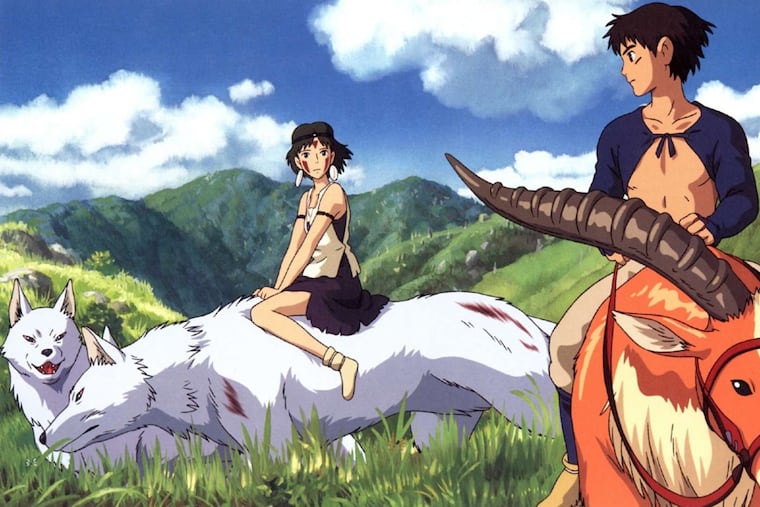Jawnts: Film that made anime respected
When Princess Mononoke debuted in America in 1999, it offered a decisive argument against those who would dismiss anime as a juvenile genre. There had been plenty of other movies that could have proven such a point to the discerning viewer, but Hayao Miyazaki's richly textured fantasy was the first to break into the mainstream.

When
Princess Mononoke
debuted in America in 1999, it offered a decisive argument against those who would dismiss anime as a juvenile genre. There had been plenty of other movies that could have proven such a point to the discerning viewer, but Hayao Miyazaki's richly textured fantasy was the first to break into the mainstream.
The fact that Princess Mononoke reliably makes the rounds of midnight movie screenings, as it will at the Ritz at the Bourse Friday, speaks to the depth and breadth of its appeal. A tradition that has filmgoers stumbling out of a theater well past 2 a.m. generally requires the movie in question to be well-loved.
It isn't hard to see why Princess Mononoke fits the bill. Miyazaki created an absorbing, gorgeous, but morally complex fantasy world that defies the Manichaean battle lines that fabulists from J.R.R. Tolkein to J.K. Rowling have wholeheartedly embraced. And the big screen is still the best way to absorb it.
Princess Mononoke is set in medieval Japan, at the dawn of the gunpowder age, just as the first rude attempts at industrialization are being attempted. It follows a cursed prince, Ashitaka, as he attempts to navigate a corner of the world dominated by forest gods enraged by human incursions onto their turf. The titular princess is a young woman, raised by enormous wolves, who sides with the forces of nature against her fellow humans.
The locus of their wrath is a proto-factory town that manufactures guns and ammunition, while voraciously consuming the natural resources that surround it. But despite the film's clear environmentalism, the community fostered by the crude industrialization of Iron Town is far more equitable than the feudal society that dominates much of the rest of the land, providing remunerative employment for lepers and women of low birth. Both sides of the conflict are sympathetically depicted, and each has its own very understandable motivations, which just happen to be existentially incompatible.
Princess Mononoke is rendered all the more impressive because the movie simply wouldn't be possible in any other format. The demon that attacks Ashitaka's village in the beginning of the film is an enormous boar covered in writhing, pestilent purple worms that contort to form grotesque limbs. It is impossible to imagine the wizardry of computer-generated imagery, which ages quickly and badly, creating a nightmarish beast of such a specific and unnerving sort.
Admission to the midnight showing at Ritz at the Bourse, 400 Ranstead St., is $10.
Have an event for Jawnts? jake.blumgart5@gmail.com @jblumgart